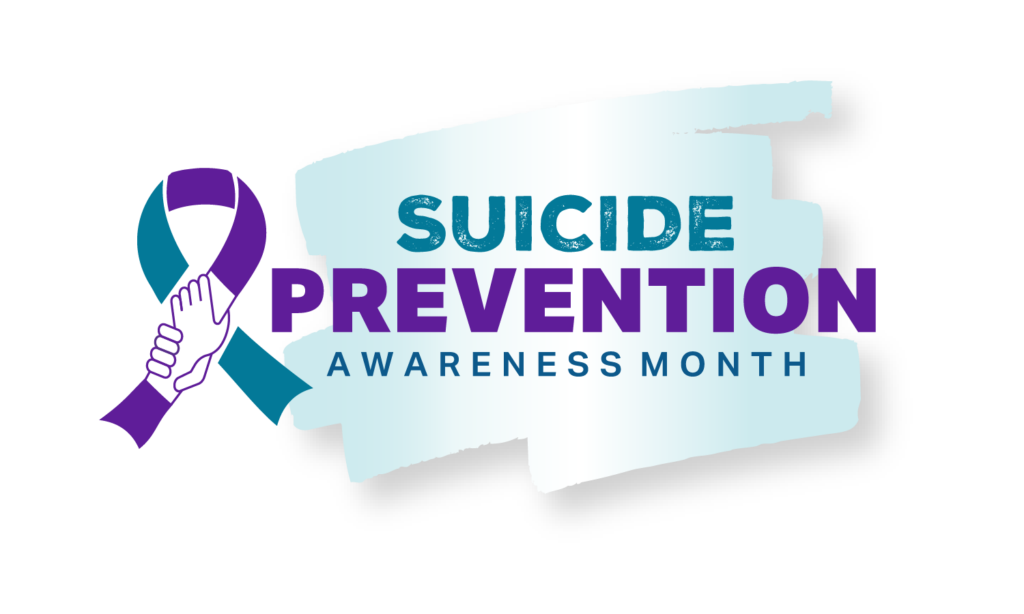September is Suicide Prevention Awareness Month, a time to raise awareness and share resources to provide support to those affected by suicide.
Maintaining Safety in Treatment: EMDR with Suicidal Adolescents
Guest Blog Post by Colleen (Cally) Sullivan, MEd, LMHC
Working with suicidal clients is a subject that often raises anxiety in even the strongest of clinicians. This is true across the client’s lifespan, but it is particularly strong in clinicians discussing the treatment of suicidal adolescents. This is not without cause. Adolescents are known to be a higher risk category in the treatment of suicidality for several reasons, the most common being their increased tendencies toward impulsive actions and decreased judgment. Both of these lead to harm actions being more likely to occur with adolescents than with adult clients with similar presentations. It is important to note, however, that this is in the comparison of adults of similar risk level, and does not mean that a suicidal adolescent is automatically at greater risk than any other adult case.
EMDR therapy can be incredibly effective in treating suicidal adolescents as it allows for a greater understanding of subconscious processing, as well as for developmental injuries to the psyche, than other treatment modalities, and its increased speed minimizes the amount of time that the adolescent client will remain with self-harm-based thoughts present. Trauma reprocessing can sometimes intensify suicidal thoughts, along with the emotions and beliefs driving them. For this reason, there are a variety of steps that can be taken, beginning at the time of intake, to maintain client safety best.
Phase 1 – Beginning treatment
At the beginning of treatment, a review of the family system should take place. This is critical, as the adolescent’s relationship with the adults in the home should be scrutinized for concerns regarding closeness, communication, and the caregiver’s understanding of the youth’s risk level and needs. If the caregiver appears responsive, but there is a lack of closeness in the relationship, or other communication concerns, an alternative safe adult that the adolescent is willing to communicate with should be identified if possible. This person will be a part of the adolescent’s safety plan, and a release will need to be placed on file. As suicidality and suicidal actions are worsened by feeling alone and cut off from others, having this person identified begins to immediately combat negative cognitions at the beginning of treatment.
A specific safety plan must be put in place at the first session. This needs to include information regarding any weapons in the home, medications, and access to transportation. Please note that the discussions on weapons and medications should discuss all possible options in these categories, and not specifically guns and prescription medications (Sullivan, 2024). There should also be a conversation surrounding risk areas, such as expressways or high bridges easily accessible to the adolescent. Under typical risk levels, the window of tolerance that appears to arise in session will be used to determine proper safety planning and need for additional containment at the end of session. In the case of heightened risk, such as a child that lives in a high rise building with roof access, we would want to shorten the window to provide additional containment of thoughts and emotions at the beginning of treatment. Please note that this is only necessary until the adolescent has shown a stabilization of treatment and should be reassessed once symptoms related to self-harm have ceased. Failure to complete this reassessment can lead to the further avoidance of traumatic material and negatively impact treatment.
Phase 2 – Resourcing
A major difference regarding the resourcing phase of treatment for adolescents is the understanding that coping abilities are likely to be overreported or explained in a way that is meant to satisfy the clinician. The clinician should plan for one to three sessions that are meant to teach specific coping tools as a result. In my practice, I focus on teaching coping tools in two specific areas: cognitive-based coping skills and physically based coping skills. As items begin to surface in EMDR treatment, the teen may need to utilize skills from one or both of these areas, potentially for the first time. If coping tools are not taught, a gap in coping abilities may arise, leading to an opening for a harm action during treatment. Examples of cognitive-based coping techniques are the ACCEPTS and IMPROVE skills from Dialectical Behavior Therapy Crisis Survival Skills, while physically based coping is represented by the TIPP and Self-Sooth with the Five Senses Crisis Survival Skills (Linehan, 2015).
Two areas of coping concerns that should be specifically addressed by the clinician are limited access to coping items and the manner in which the adolescent has seen adult family members cope. The reason for addressing access is that many adolescents will choose coping tools that are not permitted by household rules, such as having phone access or going for a walk alone late at night. In these cases, alternative skills to be used during these times must be identified as a part of the resourcing phase. Discussing the unhealthy coping tools seen from adults is also a necessary discussion, as youth may turn to these areas when they find themselves overwhelmed, but not at the degree where they will harm themselves. When these unhealthy coping tools involve things such as substance use, it is important that this is on the clinician’s radar at all times, as substance use can increase the likelihood of later harm actions.
Phases 3-7
The majority of safety planning occurs before the EMDR reprocessing sessions begin; however, there are several steps that can be used to decrease risk during the reprocessing phases of EMDR treatment.
Desensitization of Triggers and Urge Reprocessing (DeTUR)
This model, also known as DeTUR, was developed by Dr. A. J. Popky for use in the treatment of addictions. It is designed to desensitize the brain to a trigger that causes an urge to use a desired substance (Popky, 2010).
While suicidal thoughts are not inherently addictive, they do provide a sense of relief to many who experience them. As this relief is a wanted emotion, the brain will continue to provide any and all thought trains that triggered the ‘sense of relief thought’ to occur. By using the DETUR model, we can desensitize the client to the initial trigger, which leads to a direct experience of the suicidal thoughts.
Take the example of a child or adolescent who becomes triggered by sitting in the back of the classroom, as it implies a feeling of being trapped. Under most circumstances, this experience will trigger suicidal thoughts to occur while at school. If we can remove the emotional response of being in the back of the classroom, there will be nothing to trigger the suicidal thinking, leading to a decrease in the overall frequency of SI. By decreasing its frequency, we can immediately establish a better quality of life and emotional stability prior to the beginning of trauma processing.
Starting small
Starting with a smaller distressing memory, around a 3-4 Subjective Units of Distress (SUD) scale rating can provide a better understanding of the manner in which the adolescent processes areas of distress during EMDR treatment. This knowledge can allow for the clinician to maintain greater control of the processing and prevent a client from later processing material that they may not have been prepared for.
Obtaining more frequent SUDs
Obtaining a SUDs after every other pass allows for a more direct report from the adolescent about their internal experience, which may not be outwardly apparent. By obtaining the SUDs more frequently, the clinician can ensure the adolescent maintains assistance in remaining in the window of tolerance during session if needed, ensuring a stronger likelihood that they will remain in this state during the following week. If a client starts processing with a SUDS of 10, consider extending the range to fifteen to allow for better communication of additional distress.
Resolving trauma at the root
Using EMDR therapy with suicidal adolescents is both possible and productive when the proper safety measures are taken. By allowing for the processing of the underlying traumas, we do not simply provide the option of managing suicidality but reducing or resolving the cause for a lasting effect. When used as part of a comprehensive treatment plan, EMDR therapy ensures safety, open communication, and hope for a population that is often shifted between treatment providers without answers. EMDR therapy increases chances for long-term improvement.

Cally Sullivan is an EMDR therapist based in Gainesville, FL. She specializes in the treatment of suicidal and self-harming adolescents, as well as the treatment of complex trauma.
References
EMDRIA. (2024, Sep 9). EMDR therapy, suicide, postevention and self-harm Go With That Magazine Issue: Simon Proudlock on EMDR therapy and suicide. Focal Point Blog. https://www.emdria.org/blog/emdr-therapy-suicide-postvention-and-self-harm-gwt-magazine%ef%b8%8f-issue/
Linehan, M. M. (2015). DBT® skills training manual (2nd ed.). The Guilford Press.
Popky, A. J. (2010). The desensitization of triggers and urge reprocessing (DeTUR) protocol. In Luber (Ed.), Eye Movement Desensitization (EMDR) Scripted Protocols: Special Populations (pp. 489-511). Springer Publishing.
Proudlock, S., & Peris, J. (2020). Using EMDR therapy with patients in an acute mental health crisis. BMC Psychiatry, 20(1), 14. Open access: https://doi.org/10.1186/s12888-019-2426-7
Sullivan, C. (2024). Stabilization of Adolescent Suicidality and Self-Harm. KDP.
Back to Focal Point Blog Homepage
Additional Resources
If you are a therapist interested in the EMDR training:
- Learn more about EMDR therapy at the EMDRIA Library
- Learn more about EMDR Training
- Search for an EMDR Training Provider
- Check out our EMDR Training FAQ
If you are EMDR trained:
- Check out the EMDRIA Let’s Talk EMDR Podcast
- Check out the EMDRIA Focal Point Blog
- Learn more about EMDRIA membership
- Search for EMDR Continuing Education opportunities
If you are an EMDRIA™ Member:
- Learn more about EMDR Consultation
- Find clinical practice articles in the EMDRIA Go With That Magazine®
- Search for articles in Journal of EMDR Practice and Research in the EMDRIA Library
Date
September 26, 2025
Contributor(s)
Colleen (Cally) Sullivan
Topics
Self-Harm/Suicidality
Client Population
Adolescents





